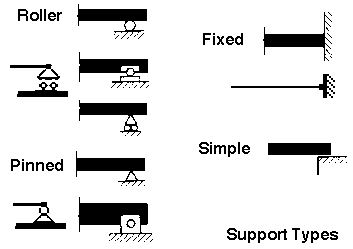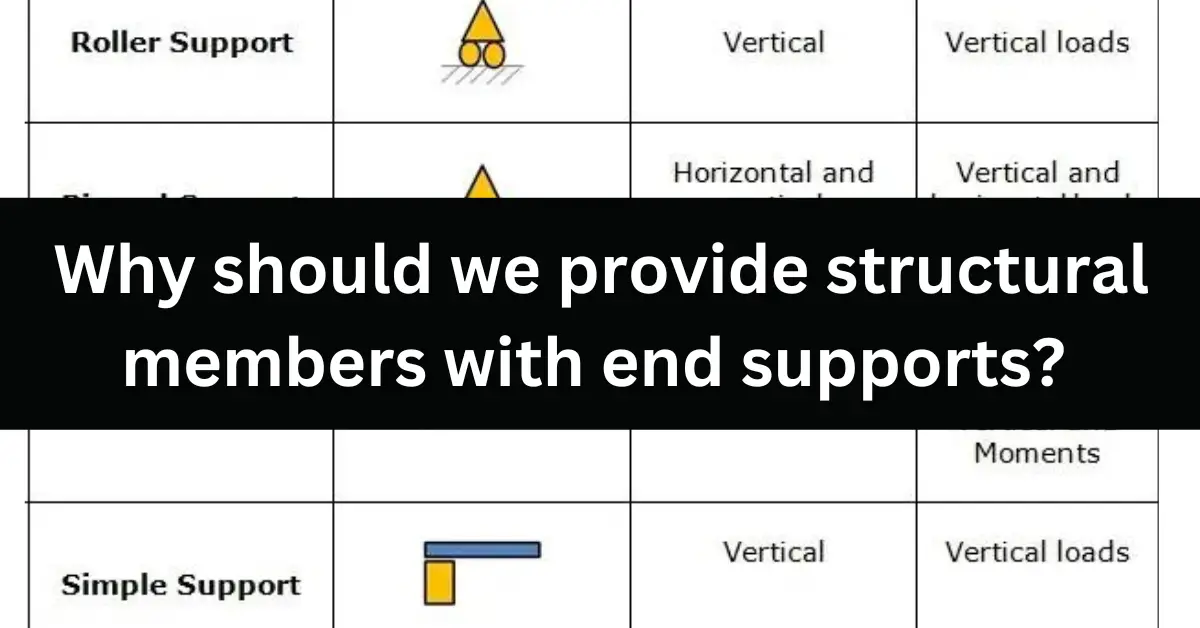End supports, also known as end restraints, are provided for structural members to ensure that the member can transfer loads safely and effectively to the supporting structure. Without proper end supports, a structural member may experience excessive deflection or failure due to the loads it is subjected to.
Providing end supports for structural members serves several important purposes, including:
- Transferring loads: End supports allow for the transfer of loads from the structural member to the supporting structure, such as a foundation or other structural element. This ensures that the loads are distributed evenly and reduces the risk of failure.
- Maintaining stability: End supports help to maintain the stability of the structural member, preventing it from rotating or deflecting excessively. This helps to ensure that the structural member can resist the loads it is subjected to and prevent collapse of the structure.
- Reducing deflection: End supports help to reduce the deflection of structural members, which can cause cracking or other forms of damage. This can be particularly important in structures that are subjected to dynamic loads, such as wind or earthquake loads.
- Improving load distribution: End supports help to distribute loads evenly across the structural member, reducing the risk of local failure.
- Enhancing safety: Proper end supports help to ensure the safety of the structure and those who use it by preventing collapse or failure of the structural members.
In summary, providing end supports for structural members is crucial for ensuring the safe and effective transfer of loads, maintaining stability, reducing deflection, improving load distribution and enhancing safety. The type of end support used will depend on the specific requirements of the structure and the loads it will be subjected to.
Table of Contents
What are the different types of end supports in structural members?

End supports in structural members refer to the type of restraint provided at the ends of a beam, column, or other structural element. There are several different types of end restraints that can be used in structural design, each with its own set of advantages and disadvantages. Some of the most common types of end restraints include:
- Fixed end restraint: This type of restraint prevents any movement of the structural member at the end. This is achieved by providing a solid connection to a fixed structure, such as a concrete foundation or wall.
- Pinned end restraint: This type of restraint allows for rotational movement at the end of the structural member, but prevents translation (movement in any direction other than rotation). This can be achieved by providing a connection that allows for rotation, such as a hinge or pivot.
- Roller end restraint: This type of restraint allows for translational movement along one axis, but prevents rotation. This can be achieved by providing a connection that allows for movement along one axis, such as a wheel or roller.
- Free end restraint: This type of restraint allows for movement in all directions, and is typically achieved by not providing any restraint at all. This type of end restraint is most commonly used in situations where the structural member is not critical to the overall stability of the structure.
- Semi-rigid end restraint: This type of restraint allows for some rotation and translation but not fully. They are in between pinned and fixed end restraint.

In summary, different types of end restraint are used in structural design, including fixed end restraint, pinned end restraint, roller end restraint, free end restraint, and semi-rigid end restraint. Each type of restraint has its own advantages and disadvantages, and the best option will depend on the specific requirements of the structure and the loads it will be subjected to.











